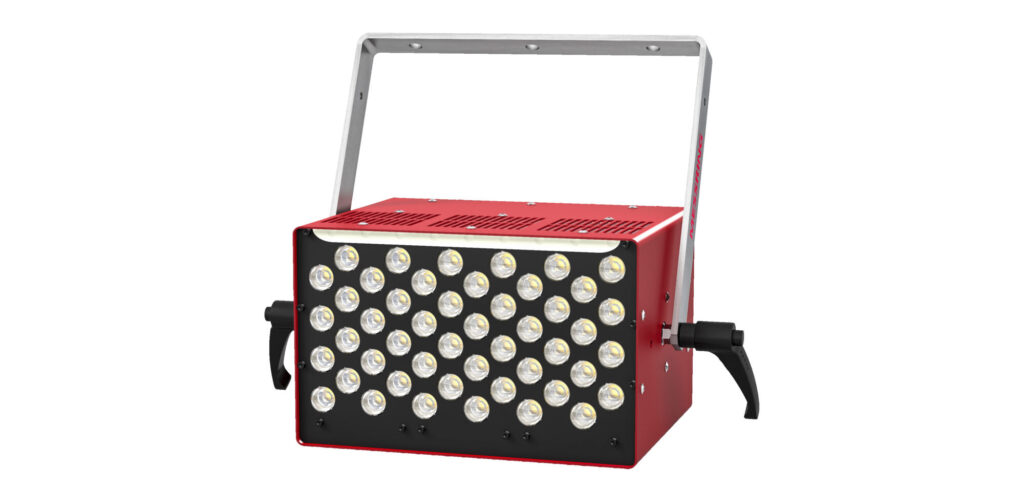Messring has released a product that aims to provide better illumination for the film documentation of crash testing. The company says that compared with its predecessor, its M=Light Evo now outputs double the brightness via a connected load of 1,150W and 48 LEDs, working together to deliver 120,000 lumens in a standard setting, or 260,000 lumens in a flash mode.
With a constant power input to enable continuous operation, the LED light are said to achieve an average illuminance of around 100,000-120,000 lux. This meets the requirements of extremely fast and short shutter speeds associated with high-speed cameras that are used for the recording of crash tests.
The company says it latest generation of lights provide powerful and flicker-free lighting with daylight color temperatures to ensure fewer lamps are needed. When placed into flash mode, they can deliver microsecond-accurate flash frequencies at up to 25,000fps.
Stepless adjustment between 20μs and 500μs provides double the light output in the peak ranges, and with synchronization possible between the light and the camera’s shutter, illumination occurs at the critical millisecond, ensuring the consistent exposure of images when shooting using a higher frame rate.
“LED lighting has become the industry standard when it comes to high-speed imaging, and the advantages over tungsten and gas discharge lamps are clear: immediately available and controllable light output with no warm-up and cool-down phases, no heat radiation to the test object, and 24/7 available performance,” commented Wolfgang Rohleder, head of sales, Messring.
Rohleder continued, “The appropriate illumination allows to fully utilize the potential of modern cameras and to deliver better images. Developers thus gain valuable insights for the further development of safety solutions. The M= Light Evo unlocks a new level in this segment. We paved the way with the first M= Light LED almost 10 years ago, and now we are taking the next step by again offering a future-proof premium solution for crash facility operators worldwide.”
Available in a range of beam angles including 37°, 56° and 71°, the new lighting system can be adapted to suit an array of facility requirements, and the product is suitable for both large-area car-to-car tests or smaller airbag deployment tests due to its modular connectivity by way of a daisy chain method. The latest LED light is also fully compatible with the company’s previous model, the M=Light LED.


